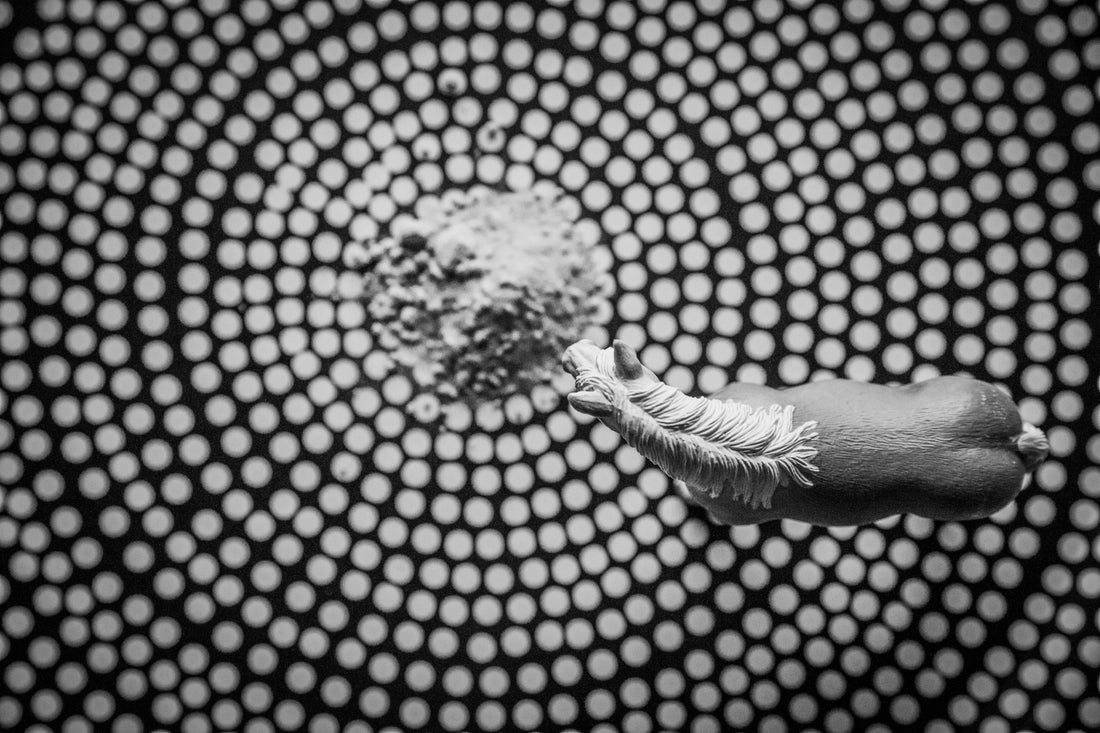Hay is the basic fodder for horses, and therefore the hay should be as high-quality and rich in nutrients as possible. However, the quality and amount of nutrients vary depending on the year, weather, producer and soil. In addition to hay and/or a pasture, horses also require mineral products.
Minerals and trace elements are important building blocks for the bones and connective tissues of horses. They also play a role in many chemical reactions in the body. The most important minerals for horses are calcium, phosphorus, magnesium, sodium, chlorine and potassium. The most important trace elements are iron, copper, zinc and selenium. The amount of trace elements required by a horse is individual depending on the horse’s age, breed, size and work, for example.
IODINE
Horses require iodine for thyroid hormone formation. The thyroid gland regulates metabolism, energy production and weight, for example. Foals and adult horses require 1–2 mg of iodine a day, while pregnant and nursing mares need a little more. Sufficient iodine intake is important for a brood mare because it impacts the mare’s estrus cycle, among other things. Seaweed is particularly rich in iodine and therefore its intake should be monitored. The daily dosage should not be more than approximately 30 grams a day. Hay, oats and mineral salt also contain iodine.
POTASSIUM
Potassium impacts the horse’s fluid balance and muscle metabolism. It’s also required for transmitting nerve impulses. Potassium and sodium are connected to each other and an imbalance in their ratio may cause muscle problems. Usually horses get enough potassium from their basic fodder.
Potassium deficiency may show as muscular weakness, fatigue or constipation, but it’s not very common.
CALCIUM
Calcium is a building material for the bones. It’s also required for the muscles and nerves to function together. Basic fodder is the main source of calcium for horses. Feed containing clover and alfalfa is richer in calcium than feed made of straw. Molasses is also a good source of calcium. Calcium and phosphorus are the most important trace minerals for horses. They’re some of the most essential building materials for bones and particularly important for pregnant mares and growing foals. The calcium-to-phosphorus ratio for pregnant mares and foals should be approximately 1.8:1 and 1.3–1.5:1 for other horses.
COBALT
The daily cobalt requirement of horses is approximately 0.6–1 mg. Cobalt is required to form the B12 vitamin in a horse’s body, and it’s also important for some enzymes to function properly. Although basic horse fodder contains cobalt, products particularly rich in it are molasses, flax and brewer's yeast. Some cobalt deficiency symptoms are anemia, lack of appetite and an urge to lick things, but it’s rare for horses to be short on cobalt.
COPPER
Copper is required for enzymes related to energy metabolism, the nervous system, bones, connective tissue, hemoglobin and red blood cells. Copper is also related to the absorption of iron. Basic fodder only contains small amounts of copper, so mineral products are essential for horses. Common symptoms of copper deficiency are anemia, fading coat color, digestive problems and urge to lick things. Copper deficiency in foals can cause developmental disorders, so it’s especially important to ensure the copper and zinc intake of foals. Their ratio should also be correct, as excessive zinc reduces copper absorption. The copper-to-zinc ratio should be approximately 1:4. The copper intake of anemic horses should always be checked.
MANGANESE
The functions of manganese are related to the development of bones and connective tissue and the nervous system. Manganese is required in energy metabolism and, for example, the synthesis of chondroitin sulfate that is important for the development of joint cartilage. The intercellular material of the bones, cartilage and connective tissue is rich in chondroitin sulfate. Pasture grass, straw and bran contain manganese, for example. The symptoms of manganese deficiency include skeletal defects, disturbances in the nervous system and lack of appetite. Horses require approximately the same amount of manganese, iron and zinc every day, in other words 300-400 mg a day.
MAGNESIUM
Magnesium is one of the bone tissue constituents. It also has an important role in the functions of muscles, metabolism and various enzymes. Horses require magnesium for muscle contractions and transmitting nerve impulses. The functions of magnesium are usually linked to calcium. Calcium deficiency or the wrong magnesium-to-calcium ratio can cause problems with muscles and the nervous system. Deficiency symptoms include shivering, disturbances in the nervous system and lack of appetite. Horses require approximately 10 g of magnesium a day. Show horses require approximately 15–20 g a day. An overdose may cause stiffness in muscles. Magnesium can be found especially in alfalfa and molasses. Chia and flax are also good sources of magnesium.
SODIUM AND CHLORINE
Sodium and chlorine are usually found together as a compound called sodium chloride i.e. salt. Sodium regulates the fluid balance and muscle metabolism of horses.
The daily requirement varies individually based on e.g. the amount of work the horse does. 60–120 g a day is recommended for show horses while horses that move less require less. The most common deficiency symptoms are licking the ground, lack of appetite, fatigue and muscular weakness. Basic horse fodder contains little sodium and chlorine, and the salt requirement can be fulfilled with a salt lick. Show horses doing heavy work may also require that salt be added to other feed. Excessive salt intake causes increased urination.
SELENIUM
Selenium is a trace element that’s vital for horses but becomes poisonous in excess. Selenium impacts the production of the thyroid hormone among other things, and it also plays an important role in reproductive functions and fertility. Selenium also affects muscular functions together with vitamin E, and due to being an antioxidant, vitamin E can partially replace selenium deficiency and vice versa. The soil contains very little selenium and therefore it should be included in the concentrated and mineral feed of horses. Deficiency symptoms include muscular dystrophy and general fatigue in muscles. The daily requirement is approximately 0.9–1.5 mg.
IRON
As basic fodder is relatively rich in iron, horses rarely suffer from iron deficiency. Their organs are also efficient in recycling and storing iron. Low iron levels are usually a sign of something else, such as insufficient intake of some other trace element or an intestinal disturbance. However, sport horses may benefit from iron supplement courses, as considerable exertion increases the amount of iron leaving the body compared to normal metabolism.
An overdose of iron weakens the absorption of other minerals such as manganese, zinc and copper in particular and may lead to deficiencies. Excessive use of iron products may cause an iron poisoning in foals in particular. Iron is related to the oxygen uptake of horses as well as general performance. Many mineral feeds have some iron added. The symptoms of iron deficiency are anemia, poor-quality hair and diarrhea. The general daily iron requirement of a horse is approximately 350–450 mg. In the rare occasions of a horse showing symptoms of iron deficiency, the cause is usually not decreased iron intake but the poor usage of iron.
SULFUR
Sulfur is important for the protein development of a horse. It also acts as a building material for vitamins. The body of a horse already contains a small amount of sulfur as it is. The sulfur requirement is small, and basic horse fodder usually contains enough of it. Sulfur is good for the joints, cartilage and hooves.
ZINC
Basic fodder generally covers the zinc requirement of horses. Zinc impacts the enzyme and hormonal actions, resistance, coat, growth, bones, skin, hair and hooves of a horse. Symptoms of zinc deficiency include skin abrasions, lack of appetite or licking objects. According to research, eating sand or manure and chewing on wood may be symptoms of iron or copper deficiency or an unbalanced copper-to-zinc ratio in feeding (Aytekin et al. 2011). Excessive zinc intake can hinder the absorption of iron and copper in the horse’s body. Zinc deficiency is rare. Zinc can be found in yeast, bran, sprouts and nuts etc.
SILICON
Horses need silicon in the development of bones, skeletal cartilage tissue and tendons. It may also affect the skin and coat. Basic fodder contains little silicon, so it’s usually added to mineral products. Nettle is a good source of silicon.
ELECTROLYTES
Horses may sweat up to dozens of liters and lose a remarkable amount of salt and minerals i.e. electrolytes (sodium, chloride, potassium, magnesium, calcium) in the process. Sweating consumes lots of water in the horse’s body and may cause dehydration which affects performance.
Not replacing the lost substances cause deficiency symptoms: weakened energy levels, fatigue, muscle spasms, disturbances in the nervous system, shivering and general muscular pain. However, electrolytes should not be fed for no reason as their excessive intake is also harmful for the horse’s body.


